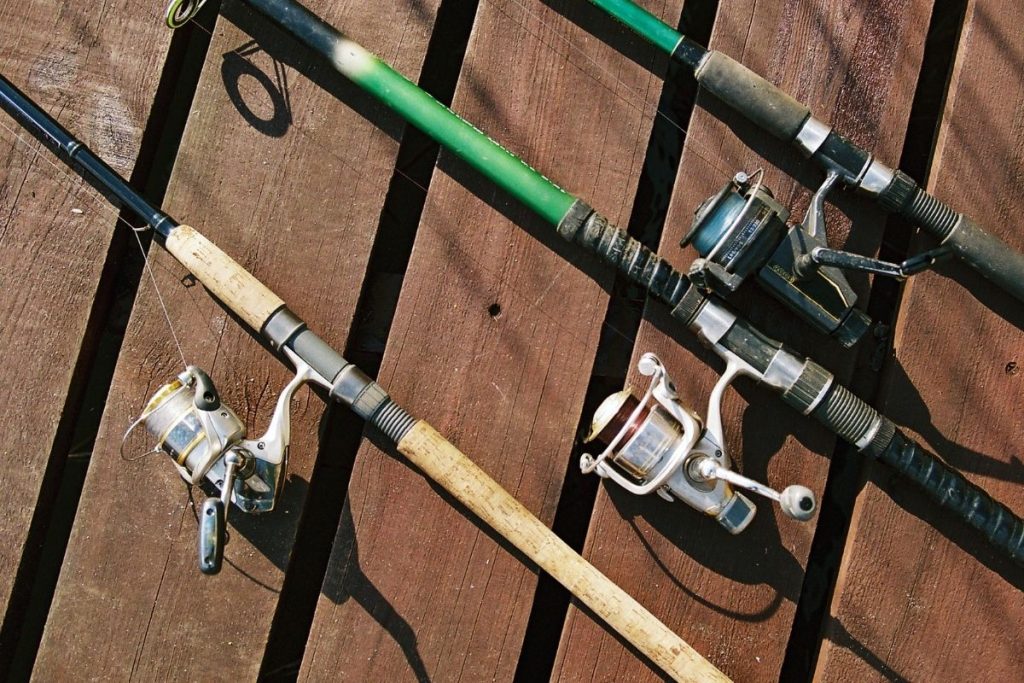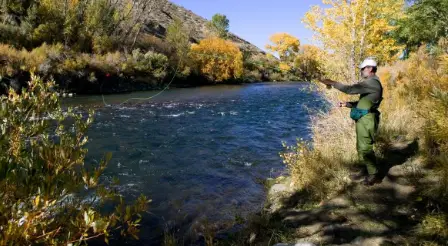How to set up a basic fishing rod? This question has been asked over and over again. The answer is simple, but it requires some practice.
There are several types of rods available in the market. They differ from each other in terms of length, diameter, material, etc.
If you want to start fishing, then you should choose the right type of rod and learn how to set it up properly to get the best catch.
This article tells you all you need to know about how to choose the right fishing rod and how to set one up for fishing. Let’s dive right in!
How To Set Up A Basic Fishing Rod
This step-by-step guide is going to take you through how to set up your fishing rod ready for you to hit the waters.
1. Clean Your Rod
The first thing you have to do before setting up your rod is clean it. You can use any cleaning solution that works well on your particular rod.
Some people prefer using a toothbrush with soft bristles, while others like to use an old toothbrush or even a nail brush. It doesn’t matter what method you use as long as it gets the job done.
2. Assemble Your Rod
Once your rod is cleaned, you will assemble it, as most rods come in 2 or 4 pieces, and you need to put these together if you do not have a one-piece fishing pole.
You need to layout the pieces and find the butt section, which should be the thickest. You then need to lay them out in order of thickness, as this is how you will assemble them.
When connecting two sections, you need to line up the eyes and ensure the join is solid. To do this, follow these steps:
- Take the thickest section with the next thickest section
- Place the male ferrule of the thin section into the female of the thick piece
- Once you have done this, ensure the eyes are in line by looking through them down the rod lengthways
- Push the ferrules together tightly if this is correct, and the pieces should be tightly connected
- Repeat these steps until the rod pieces are all together
3. Attach the Reel To Your Rod
Now that your rod is assembled, we need to attach your reel to it. There are many different ways to attach your reel to your a basic fishing rod.
Some reels require special tools to fit them onto the rod. Others can simply be fitted onto the rod without any tools.
Generally, to assemble the reel, you need to slip the feet of the reel into the hood of the reel seat and slide up or down this hood so it covers the other foot. Screw the collar either up or down and tighten to secure the hood and the reel. Tighten it so it is secure, but don’t tighten it so much it damages the seat.
4. Spooling Your Reel
Take some of your lines off the spool and thread it from the top through the reel eyes. Next, you need to open the bail arm and ensure the line doesn’t go through it. Tie an arbor knot to connect your line to the spool and ask someone to thread a pencil through the middle hole of the spool.
Wind your reel so the line comes into your reel, and ask someone to hold the edge of the spool with a cloth and apply friction. Wind on the line until you have a full reel and leave around an eighth of an inch from the edge of the reel spool.
5. Set Up Your Line
To set up your line, you need to cut it into lengths. Cut each length about 1/8th of an inch longer than the distance between the eye of your reel and the end of the rod. If you want to use a leader, make sure it’s at least 3 inches long.
Next, tie a small loop at the end of the line and feed it through the eye of the reel. Pull the line back through the eye of the rod and pull tight. Repeat this process for every 10 feet of line. When you get to the end of the line, tie another small loop and repeat the process. This ensures the line does not kink when you cast.
6. Cast Your Line
The last step is to cast your line with bait. Take your rod and place the tip of the rod into the water. Ensure there is enough tension on the line and the rod is straight. Hold the rod steady and slowly let the line fly away from you.
The key here is to keep the rod horizontal as it flies over the water. As soon as the line hits the surface of the water, stop pulling the rod and allow the line to sink.
Once the line has sunk, gently lift the rod out of the water and watch where the line goes. It should land on the opposite side of the rod.
How To Choose The Right Fishing Rod

Tyger Leader is reader-supported and may earn a commission when you book or purchase using our links. Learn more about our affiliate disclaimer here.
1. What Is Your Budget?
Before buying any product, you must first decide what your budget is. You can buy an expensive or cheap rod depending on your budget. For example, if you have a low budget, then you can go with a cheap rod.
But if you have a high budget, then you can spend more money and buy a better quality rod, and this will improve the whole fishing experience, so it is sometimes worth investing.
2. Know What Size You Need
The next thing you need to do is find out what size rod you need. There are different sizes of rods available in the markets. These include:
- 5/8-inch (15mm) rods
- 7/16-inch (12mm) rods
- 1/4-inch (6mm) rods
- 3/8-inch (10mm) rods
- 5/16-inch (9mm) rods
- 9/32-inch (22mm) rods
- 11/64-inch (25mm) rods
You should buy a rod of the appropriate size so that you have a good chance of catching the fish you want.
3. Decide Whether You Need A Spinning Or Baitcasting Rod
If you are planning to catch small fish like trout, bass, etc., then you should go for a spinning rod. Spinning rods are designed to cast large distances. They are used by anglers who want to target big fish.
On the other hand, bait casters are designed to cast smaller distances. Baitcasters are usually preferred by anglers who want a quick way to put their baits into the water.
4. Determine The Distance Between The Tip And Handle
Most people think that the longer the rod is, the better it is. But this isn’t always true. The distance between the tip and the handle determines the strength of the rod.
For instance, if you want to fish close to shore, then you should avoid using long rods. Instead, you should opt for shorter ones. This will ensure that you don’t lose control of the rod when you’re casting.
5. Consider The Weight Of The Rod
Another important factor to consider while buying a rod is its weight. Most people prefer lighter rods because they feel more comfortable holding them. However, heavier rods are easier to manipulate.
6. Consider The Materials
Rods can be made from a number of different materials, such as graphite, steel, fiberglass. Each material has its benefits and drawbacks, so be sure to do some research on each one before making your final decision.
Final Thoughts
We hope by reading this article you have learned all about how to set up your fishing rod and know how to choose the right one for the type of fishing you prefer.
Although it can be tricky at first, with practice, we promise it becomes easier, and you’ll be casting like a pro in no time!



